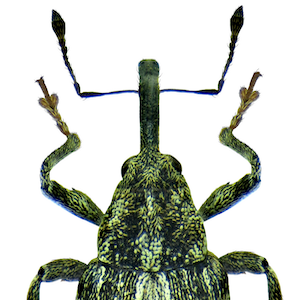Population dynamics of the weevil Datonychus melanostictus (Coleoptera: Curculionidae) on spearmint crop in Chaouia region, Morocco

Accepted: 27 August 2021
HTML: 9
All claims expressed in this article are solely those of the authors and do not necessarily represent those of their affiliated organizations, or those of the publisher, the editors and the reviewers. Any product that may be evaluated in this article or claim that may be made by its manufacturer is not guaranteed or endorsed by the publisher.
The mint rhizome borer, Datonychus melanostictus (Marsham, 1802), is a new pest of spearmint crop in Chaouia region north central of Morocco. The main damage is caused by the larvae, which tunnel inside the rhizomes. In this study, we investigated the population fluctuation of D. melanostictus in spearmint fields during two seasons 2013 and 2014 using two sampling methods. The emergence of weevil begins in late March, followed by an increase of egg laying activity during May. A strong larval activity takes place at rhizomes below ground during late May to early June. Pupation takes place mainly inside the rhizomes. New generation adults reached three peaks between June and early August 2013 and two peaks during June and July in 2014. The highest larval density recorded before flowering resulted in significant reduction of the average fresh yields to 6.6 t/ha. Protection of mint fields against D. melanostictus is a daily challenge, population dynamics can be a tool to predict and to help farmers for applying protection methods in the best way.
Supporting Agencies
the National Agency for Sanitary Safety of Food Products (ONSSA)PAGEPress has chosen to apply the Creative Commons Attribution NonCommercial 4.0 International License (CC BY-NC 4.0) to all manuscripts to be published.


 https://doi.org/10.4081/jear.2022.9867
https://doi.org/10.4081/jear.2022.9867



